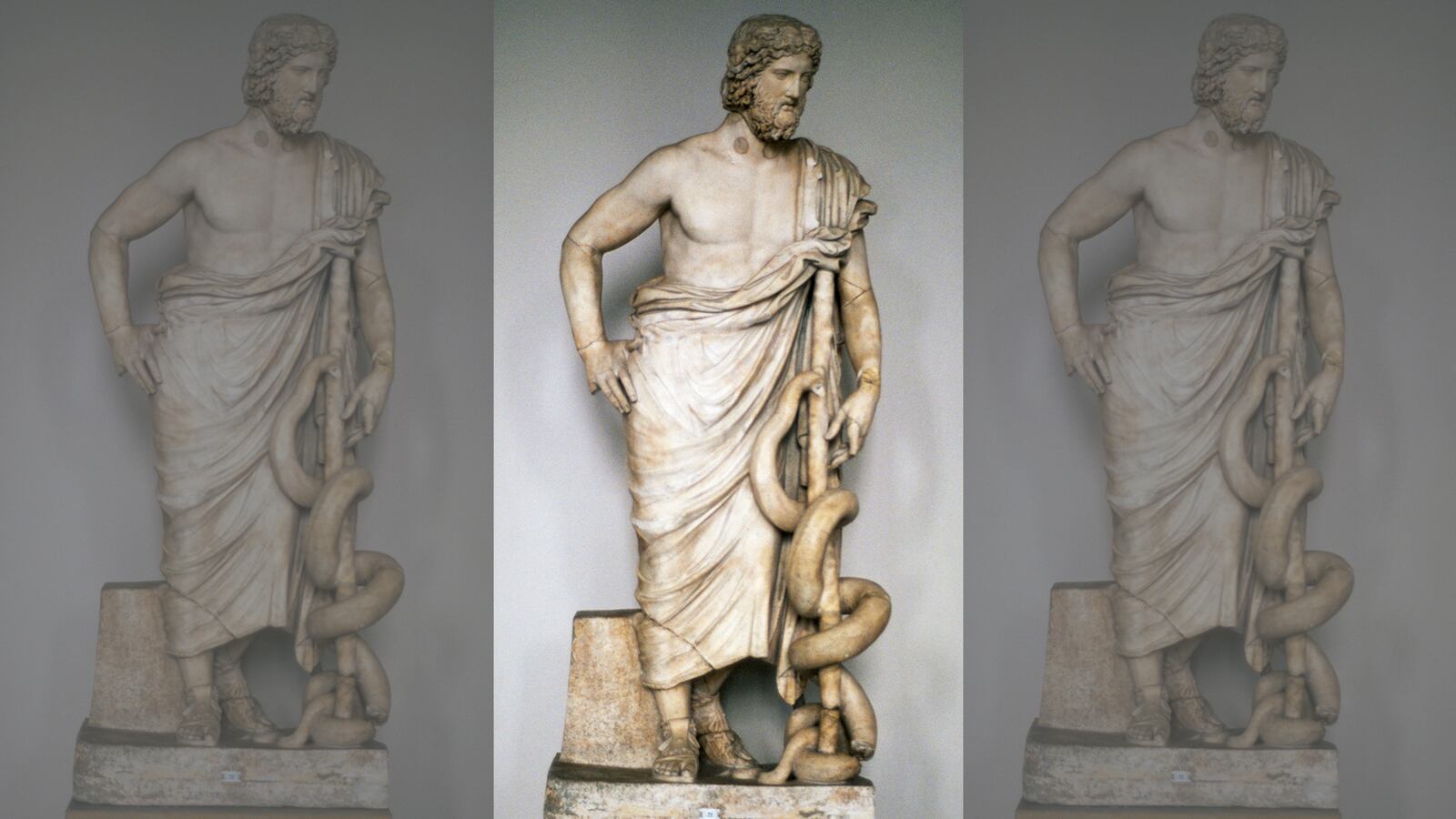Last week marked the 30th anniversary of the Americans with Disabilities Act, the legislation that guarantees disabled Americans protections under U.S. law. What seemed at the time to be ground-breaking legislation may actually be a late arrival to the accessibility party. A new article on the archaeology of ancient healing centers argues that thousands of years before the ADA was passed, the ancient Greeks were already providing accommodations for those with mobility impairments.
Though the landscape of Greece is dotted with ancient temples, and ruins, visitors to the country often make their way to the shrine dedicated to the healing god Asclepius in Epidaurus. This magnificent UNESCO site in the north-eastern Peloponnese was one of—if not the—most important healing sanctuaries in ancient Greece. People would come from far and away looking for the kind of miraculous healthcare that only a deity can provide. Modern tourists might wonder, however, how people with mobility impairments managed to navigate the large multi-stepped temple complex.
In a recently published article in Antiquity, Dr. Debby Sneed, an archaeologist at California State University, Long Beach argues that many ancient healing centers catered to the needs of pilgrim-patients. While her article interweaves an analysis of ancient architecture, inscriptions, artwork, and literature, in the end her evidence is remarkably simple: ramps. Fixed stone ramps are rarely a feature of ancient temple complexes even if the famous Acropolis in Athens, for example, had a large lengthy ramp that led up to its entrance. The Sanctuary of Asclepius at Epidaurus, however, had at least 11. In general, Sneed observes, healing sanctuaries “had more ramps than non-healing sanctuaries.”
In the past when scholars have examined these ramps they have often assumed that they were used to transport animals or other sacrificial apparatus. There’s a problem, though. “The thing about sacrifices,” Sneed told The Daily Beast, “is that the animals did not go into the temples or buildings: animals were sacrificed on altars outside of the temple, and many of the buildings were just too small to host livestock.” Animal sacrifice, therefore, can’t explain why it is that the buildings have ramps. Similarly, it’s unlikely that they were used just to help transport heavy items, because treasuries (which housed heavy items dedicated to the god) didn’t have ramps attached. Instead, Sneed proposes, just as in the present, these ancient ramps were multifunctional: they allowed those with mobility impairments, the elderly, and those transporting goods to access the buildings more easily.
Sneed’s arguments make sense because there was so much disability in the ancient world. Even if we only consider mobility impairments, there are many stories of wartime injuries that necessitated amputation or caused permanent injury. Vase paintings show the elderly using crutches; the name “Oedipus” (“swollen feet”) is a pun based on the ankle injuries he sustained as an infant; and even one of the 12 gods of Olympus—Hephaestus—walked with a limp and sometimes used a cane (according to Homer he also had a cadre of golden female robots to wait on him). Excavations at a cemetery in Amphipolis in northern Greece have revealed that between the fifth and fourth centuries B.C. 60 percent of skeletons showed evidence of conditions that could have affected mobility.
More specifically, many of the fourth century B.C. inscriptions found at the Sanctuary of Asclepius refer to visitors with mobility impairments. Now, as Sneed readily acknowledges, not all of the inscriptions are accurate reports of people’s physical condition. One well-known and fantastical inscription relays a story of a woman named Kleo who had been pregnant for five years asking to give birth. Her multi-year pregnancy ended when she left the temple precinct and gave birth to a little boy who immediately got up and started walking around. This doesn’t mean that all of the inscriptions are fanciful. One such believable inscription from Epidaurus mentions a man who was carried in and out of the abaton (the building where suppliants would sleep and hope to receive an instructive dream from the Asclepius) by enslaved attendants.
Stories like this, Sneed told me, suggest that those who had mobility impairments could be carried to the shrines on wagons or litters. Just as the paralytic healed by Jesus in the Gospels or Militiades, a hero of the Battle of Marathon, were carried on litters by others. Others used canes or crutches to get around. “There were no wheelchairs,” she added, “but ramps would have been helpful for a lot of these situations.”
This isn’t to say that ancient Greece was a progressive utopia that cared about inclusivity. These architectural details, Sneed said, reflect an ancient mindset that “people were used where they could be.” An anecdote about the famous Athenian statesman Pericles recalls that one day Pericles saw an enslaved man fall out of a tree and break his leg and drily remarked that this man was going to become a tutor (a children’s teacher). The point of the not-at-all-true story is both that tutors are those who can be put to no other use, and that people who are impaired can be employed in different ways.
Though they were not disability activists, the ancient Greeks were interested in designing buildings that served their use. “Even without the framework of civil rights as we understand them today,” Sneed argues, “the builders of these sites made architectural choices that enabled individuals with impaired mobility to access these spaces.” Just as in the present, how the ancient Greeks designed buildings says a great deal about who they intended to use the spaces. Certainly, the principle of design for use has all kinds of applications when it comes to modern architecture. Sneed told me, “It isn’t a favor to make buildings accessible, it isn’t something that anyone should feel grateful for, we should do it because we intend the buildings to be used by everyone and that includes people with disabilities.”

